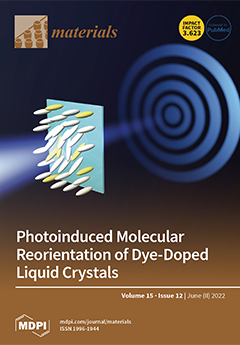The present study aimed at evaluating the mechanical performance under bending loads of circular hollow sections of steel. Different bending tests have been carried out by applying two-point loads, to determine and examine the effects of the diameter, the thickness of the section,
[...] Read more.
The present study aimed at evaluating the mechanical performance under bending loads of circular hollow sections of steel. Different bending tests have been carried out by applying two-point loads, to determine and examine the effects of the diameter, the thickness of the section, and the span of the beam on the performance of the steel tube. The effects of square opening and variation in the number of openings on the performance of these sections have also been examined. Ten samples of hollow circular beams of varying thickness (2 mm, 3 mm, and 6 mm), varying diameter (76.2 mm, 101.6 mm, and 219 mm), and varying span (1000 mm, 1500 mm, and 2000 mm) were fabricated and tested for pre-failure and post-failure stages. The dimensions of the reference specimen considered were 3 mm in thickness, 101.6 mm in diameter, and 1500 mm in span. The results have shown that on increasing the section thickness by 200%, ductility and bearing strength were enhanced by 58.04% and 81.75%, respectively. Meanwhile, decreasing the section thickness by 67%, ductility and bearing strength were reduced by 64.86% and 38.87%, respectively. Moreover, on increasing the specimen diameter and on decreasing span, a significant increase in bearing strength and stiffness was observed; however, ductility was reduced. Meanwhile, on increasing the span of the specimen, all the parameters observed, i.e., bearing strength, stiffness, and ductility, decreased. On observing the ultimate strength of each specimen with square opening, the ultimate strength was reduced by 17.88%, 19.71%, and 14.23% for one, two-, and three-square openings, respectively. Moreover, the ductility was significantly reduced by 72.40%, 67.71%, and 60.88% for one, two-, and three-square openings/apertures, respectively, and led to the sudden failure of these specimens. The local buckling failure dominated for specimens having a D/t ratio more than 50 and showed very negligible levels of ovalization of the cross-section. Local buckling failure was observed to be prevented after providing the circular rings in the specimen, since bearing strength increased compared with the specimen without rings.
Full article






